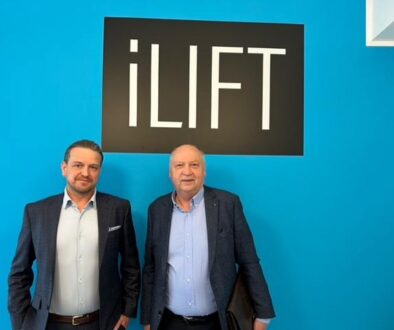Elevator pitch – what is it?
Elevator pitch
Have you heard about the ‘elevator pitch’? It’s a concise presentation format designed to generate interest and open the door to further collaboration. ‘Elevator’ refers to lifts or elevators, and ‘pitch’ is a presentation selling a product or idea. At iLift, we’re interested in everything related to elevators, even when the elevator in question is just a metaphor.
While our services and products speak for themselves in terms of quality, we use our ‘elevator pitch’ to make connections at trade fairs. We’d be happy to share with you what in our case this entails.
Anthony Eden, a British politician, used to say that a speech should have an interesting beginning and an intriguing ending, but the latter should be as close to the beginning as possible. This also applies to an elevator pitch presentation. However, concise content doesn’t guarantee success. The 9 Cs strategy, created by American author Chris O’Leary for entrepreneurs, salespeople, managers, or job seekers, aims to convey key information in two minutes or less.
The 9 principles of the strategy are easy to remember, as they all start with the letter “C”:
- Conciseness – Maximum content with minimum words. Condense the pitch to a few, at most a dozen sentences. Focus on specifics.
- Clarity – Use simple language and avoid specialized terminology. Try reading your prepared presentation to your family. If everyone, regardless of age, understands it, it’s good.
- Compelling – Present the essence of what you want to say. Side stories may be interesting, but you won’t have time to tell them in a few seconds.
- Credible – Build trust and prove that you or your project are the best choice.
- Conceptual – Appeal to the audience’s reason – present hard facts and substantive arguments.
- Concrete – Don’t water down the message with details. If the listener wants to know more, they will ask.
- Customized – Tailor the presentation to the recipient, their characteristics, and requirements. Avoid a one-size-fits-all speech.
- Consistent – Although you adjust communication to the recipient, different versions of the presentation must be consistent and convey the same basic information.
- Conversational – Make an impression on listeners, encourage them to discuss and ask questions.
What to talk about?
In ‘Elevator Pitch Essentials’, O’Leary provides examples of best practices and illustrates what to avoid. Although the author doesn’t explicitly state what should be in the presentation, it’s understood that it must be concrete. Depending on the presentation’s purpose, you’ll also be presenting yourself more than just a project.
When introducing yourself, start with who you are, what you do, and your experience. But be cautious not to let this thread dominate the presentation. Convince the listener why they should choose you – what they gain, what sets you apart from other candidates.
When presenting a project, service, or product, start with the main idea and move on to a factual description. Talk about the product’s clients and target markets. Present all of the benefits – both tangible and intangible. Prove that your project stands out from the competition.
Don’t be too long – the speech should last a maximum of a few tens of seconds and not exceed 200 words. It’s worth memorizing it by heart, in order to be ready whenever the opportunity arises to present the project. Your elevator pitch should capture attention and pique the interest of your listeners. When successful, there will be always an opportunity for a longer presentation.




